A fighter plane designed for the US Navy during World War II was still taking down jet fighters over Vietnam 20 years later
The Douglas A-1 Skyraider was designed for the US Navy in the final years of World War II.
The A-1, a piston-engine propeller plane, held its own even as the US embraced jet-powered aircraft.
When the A-1 left US service in the 1970s, about 30 variants had been used for different missions.
On August 5, 1964, US Navy aircraft kicked off US air operations in the Vietnam War, launching from the carriers USS Ticonderoga and USS Constellation to strike North Vietnamese targets.
The Navy attack formations were composed of two aircraft: the jet-powered Douglas A-4 Skyhawk that had entered service eight years earlier, and the Douglas A-1 Skyraider, a piston-engine propeller plane. Originally intended for service in World War II, the A-1 first flew as the Allies closed in on Nazi Germany but didn't enter service until 1946.
Even as the world's major militaries embraced jets, the Skyraider held its own. It continued fighting well into the 1970s and has gone down as one of the best attack aircraft of all time.
Development
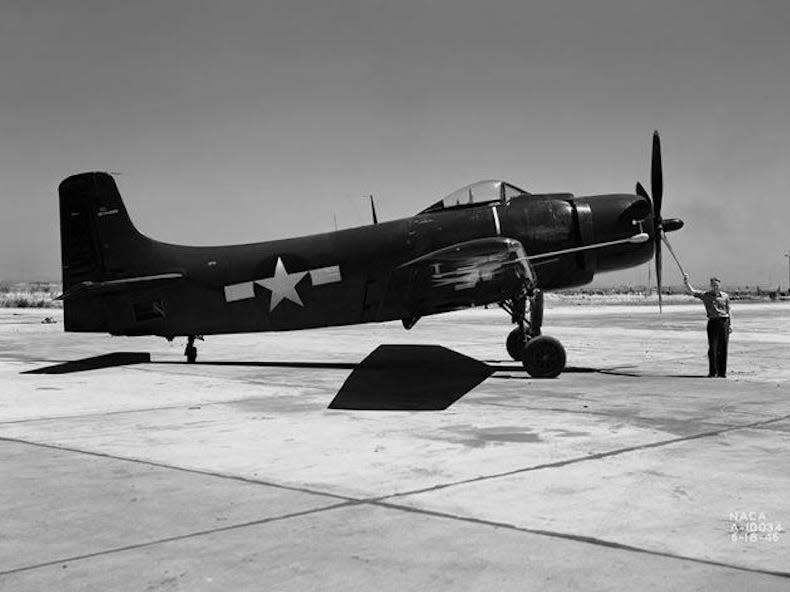
Work on what would become the A-1 Skyraider started in 1942, when the Douglas Aircraft Company was competing to build a replacement for the Navy's venerable Grumman TBF Avenger and Curtiss SB2C Helldiver torpedo and dive-bombers.
The Navy wanted a single-seat carrier aircraft that could travel farther and carry more ordnance for use against the Japanese. Douglas' initial entry, the BTD Destroyer, suffered after design requirements changed during its development and was a clear loser compared to its competitors, like the Martin AM-1 Mauler.
At a meeting with Navy officials in 1944, Douglas' chief engineer, Ed Heinemann, was allowed to cancel the original design and present a new one. That night, he and two other Douglas engineers created the blueprints for the new plane in a hotel room. Their design was approved the next day on the condition that the first test flight would occur no more than nine months later.
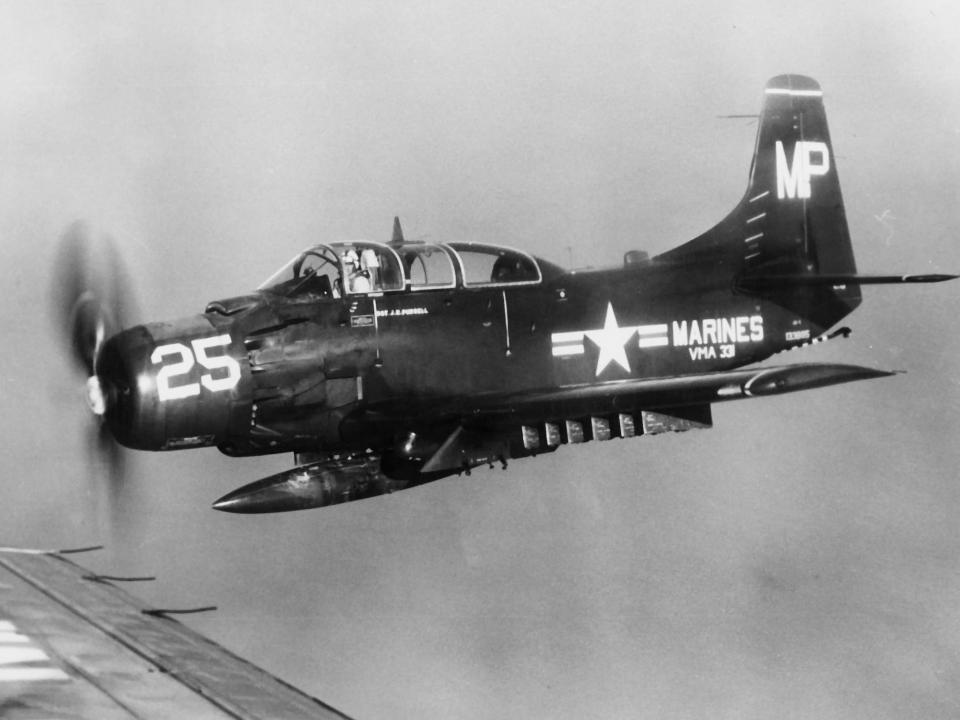
On March 18, 1945 — just one day past the deadline — the aircraft, called the XBT2D at the time, made its first flight. It was an instant success despite the quick development time and outperformed all of its competitors.
Powered by a single Wright R-3350 Duplex-Cyclone engine, the same model used on the B-29 Superfortress, the XBT2D could fly 300 mph and had a ceiling of over 24,000 feet. It was armed with four 20mm cannons and had 15 hardpoints able to carry 8,000 pounds of bombs — more than a B-17 bomber.
On May 5, the Navy announced its plan to purchase 548 aircraft, but by then the war was ending. Germany surrendered on May 7, and only three aircraft were delivered before Japan surrendered on August 15.
The Skyraider
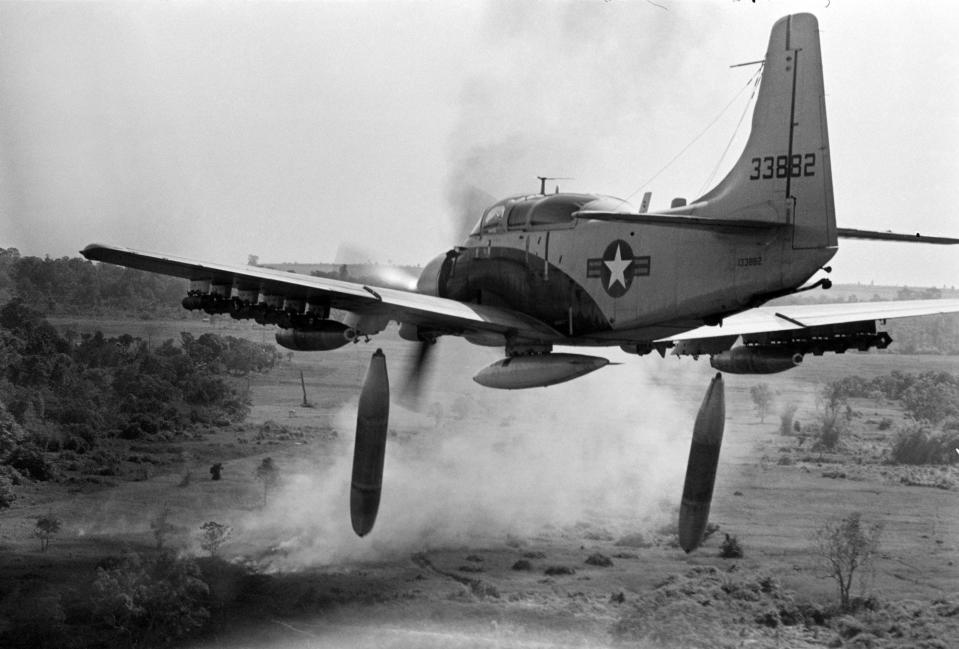
With the Navy starting to invest in jet-powered aircraft, the massive wartime order for the XBT2D was canceled. The plane continued to impress Navy pilots, though, and in 1947, the Navy ordered 239 planes — now designated "AD Skyraider" — in three variants.
The decision was wise, for the Skyraider proved to be an excellent ground-attack aircraft just a few years later in the Korean War. Navy and Marine Skyraiders were tasked with attacking train stations, bridges, dams, and power stations as part of the Navy's efforts to blockade North Korea.
Flying from carriers off the Korean coast, Skyraiders were able to stay on station for hours at a time, deliver 8,000 pounds of bombs with precision, and withstand a massive amount of fire thanks to their armor plating. They also provided invaluable support for ground operations.
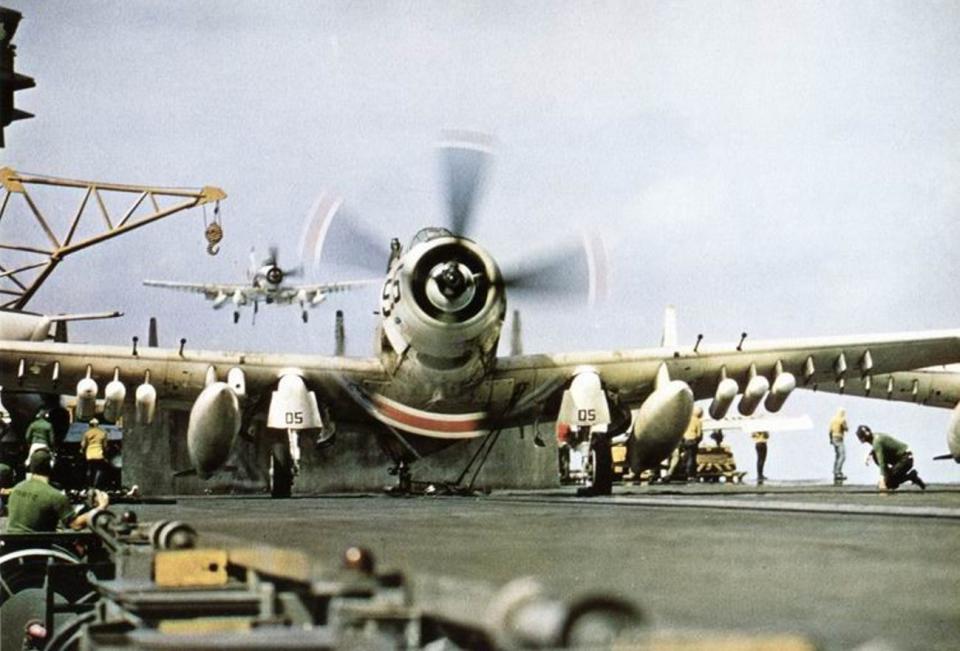
Skyraiders performed so well that the Navy bought more, including new variants for a wider set of missions. In 1962, the Skyraider was redesignated "A-1." The US Air Force and its South Vietnamese counterpart also began operating the plane that year.
In addition to conventional bombing missions, the Skyraider took a role in counterinsurgency operations, where it excelled because of its long loitering time, massive payload, and its ability to operate in nearly all weather conditions, and to withstand heavy anti-aircraft fire.
Navy Skyraider pilots even managed to down MiG-17 fighter jets on two occasions. The first, on June 20, 1965, came during a rescue combat air patrol in North Vietnam and was the first air-to-air gun victory of the war. The second came on October 9, 1966, during a similar mission.
US Air Force pilots quickly became fond of the Skyraider. Their variant, the twin-seat A-1E, provided essential air cover in search-and-rescue missions for downed pilots. By the end of the war, Air Force Skyraiders conducted more than 90,000 combat sorties, including more than 1,000 a month during the peak of the fighting.
Legacy
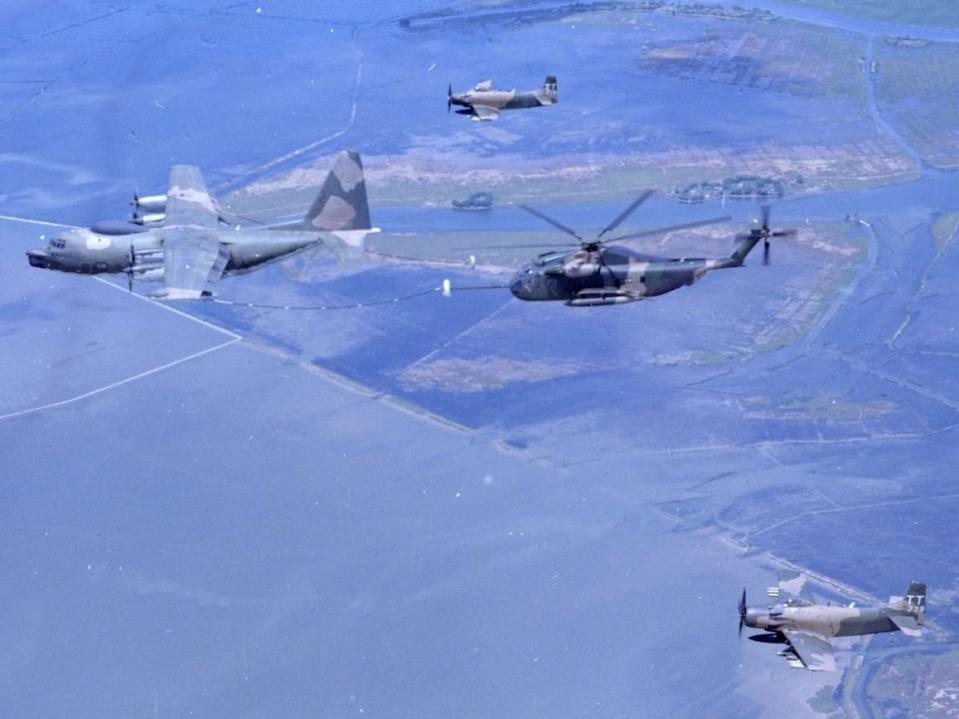
By the time production ceased in 1957, 3,180 Skyraiders had been built and delivered. During the Korean War, 128 Skyraiders were lost to enemy action and other causes. In Vietnam, 266 Skyraiders — 65 Navy and 201 Air Force — were lost.
The Navy continued to fly the Skyraider until 1968, when it began retiring the plane and replacing it with the A-6 Intruder. The last Air Force Skyraider mission was on November 7, 1972, and all of the service's remaining Skyraiders were transferred to the South Vietnamese air force in 1973.
Other air forces continued using the Skyraider until the 1980s.
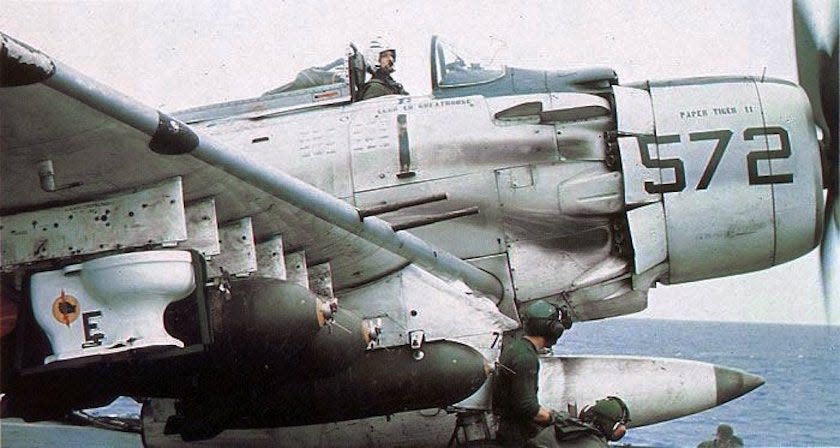
When the aircraft left US service, about 30 Skyraider variants had been used for missions including anti-submarine warfare, night-fighting, rescue escort, electronic warfare, and medical transportation.
Skyraiders were even designated as delivery systems for the Navy's stockpile of air-dropped nuclear bombs for a time. Other ordnance was less lethal but still notable: In 1965, a Skyraider took off from the USS Midway with a broken toilet that it dropped over South Vietnam, purportedly marking the 6 millionth pound of ordnance dropped.
A flying anachronism, Skyraiders earned one of the best reputations any combat aircraft could have. Jet pilots weren't above teasing their propeller-bound colleagues, but if a "Sandy" pilot, as Air Force Skyraider fliers were known, walked into a bar, "he would have a hard time paying for a drink," according to the pilot of an F-105 Thunderchief.
Read the original article on Business Insider

